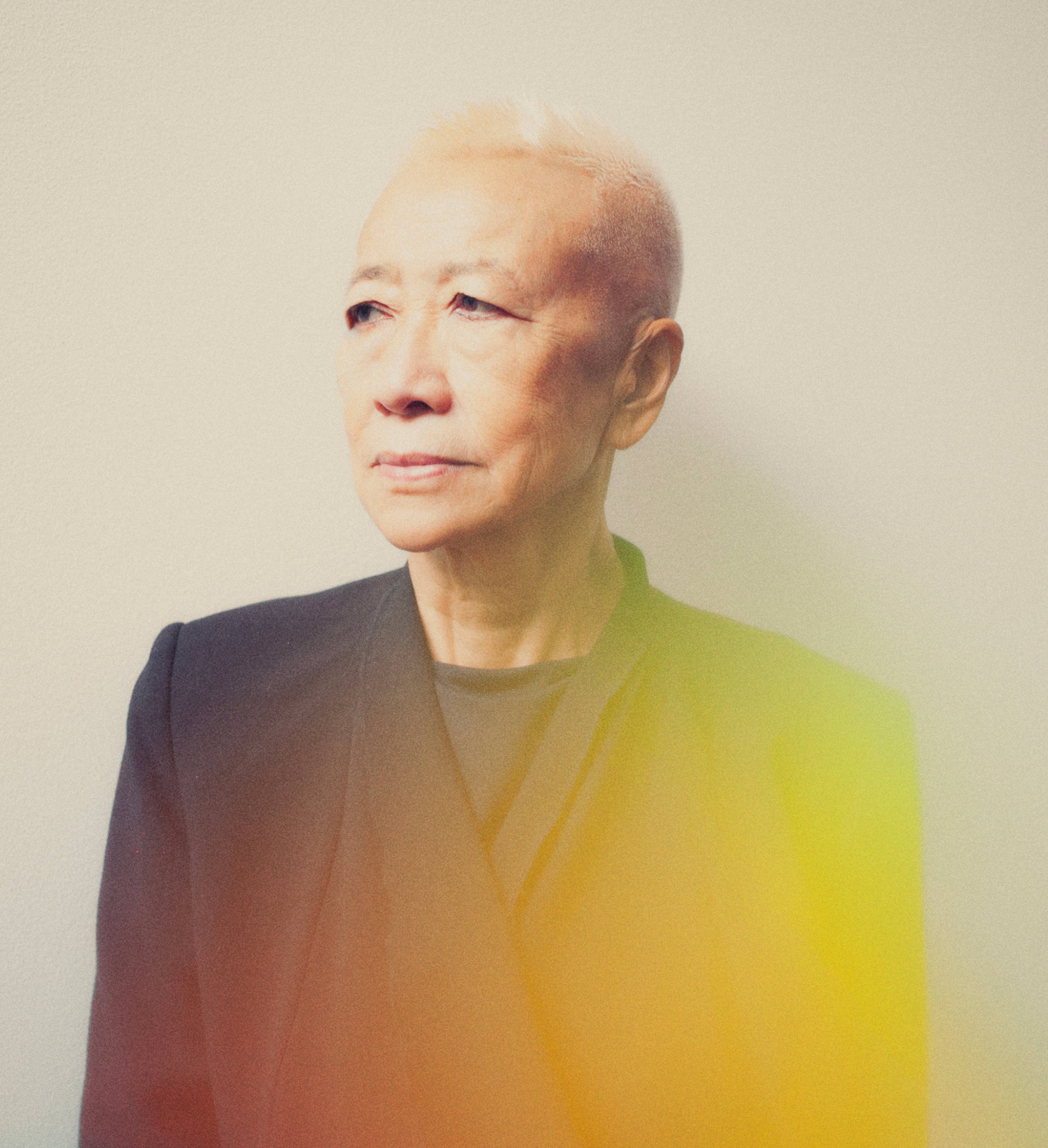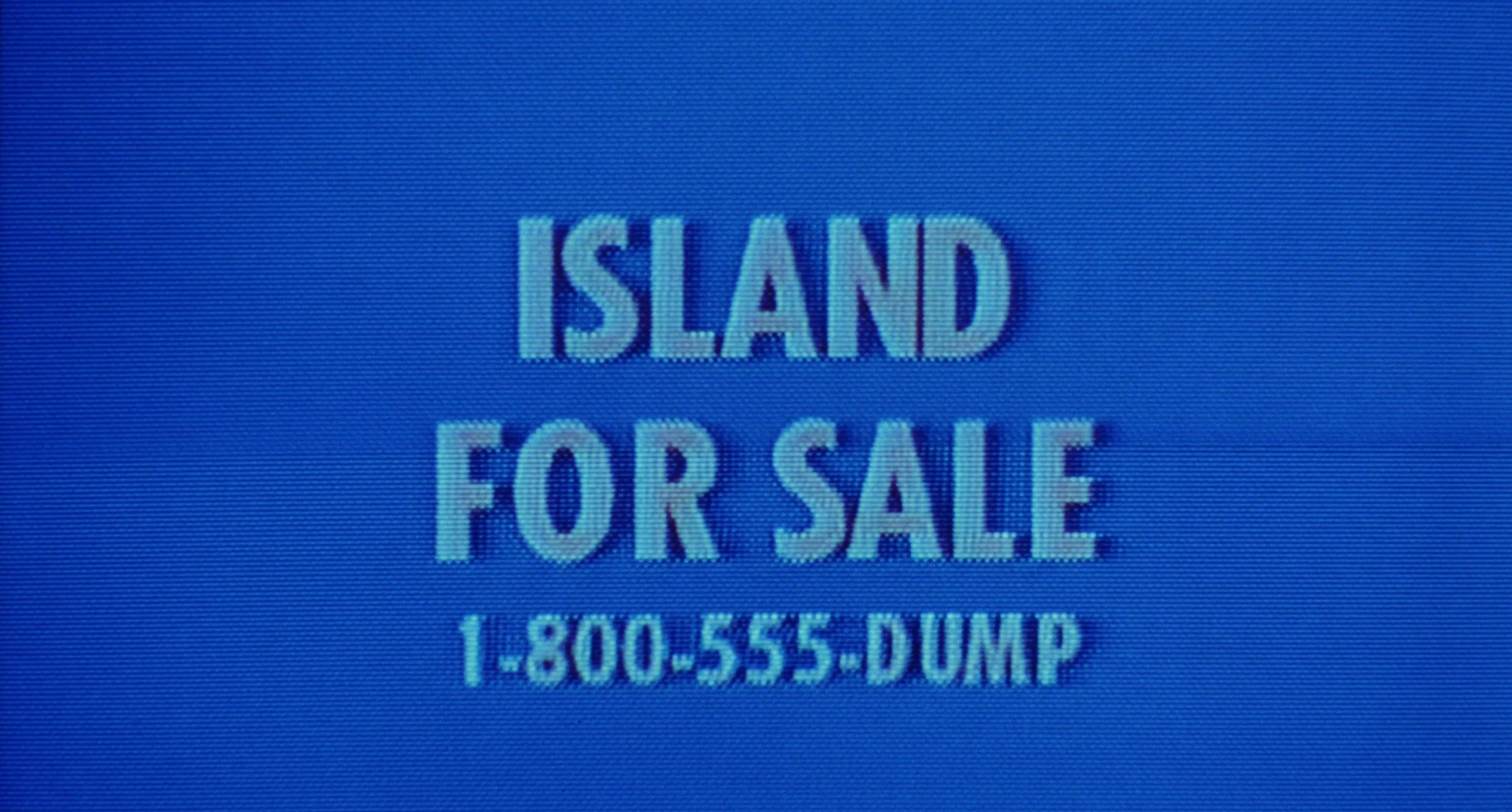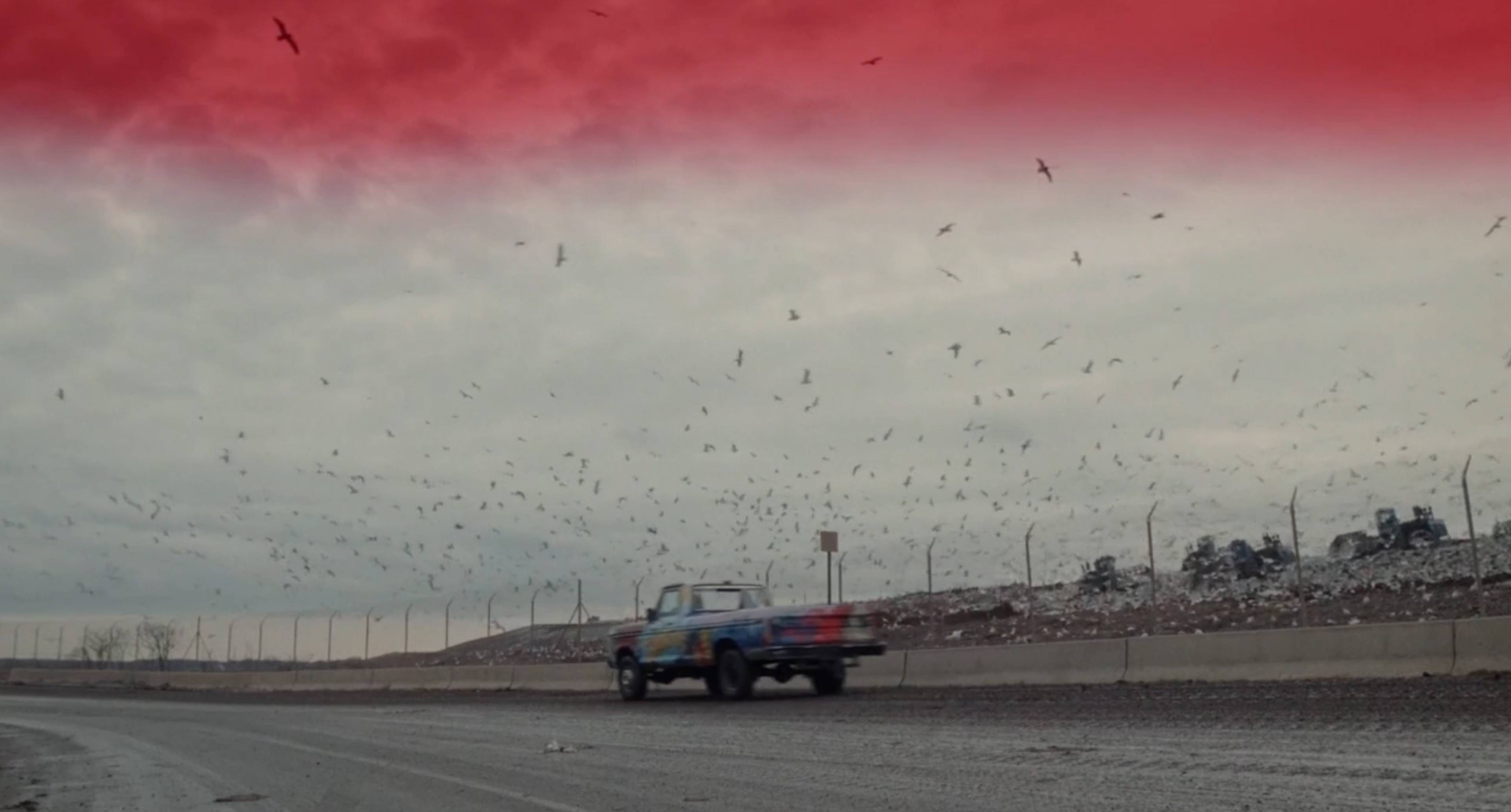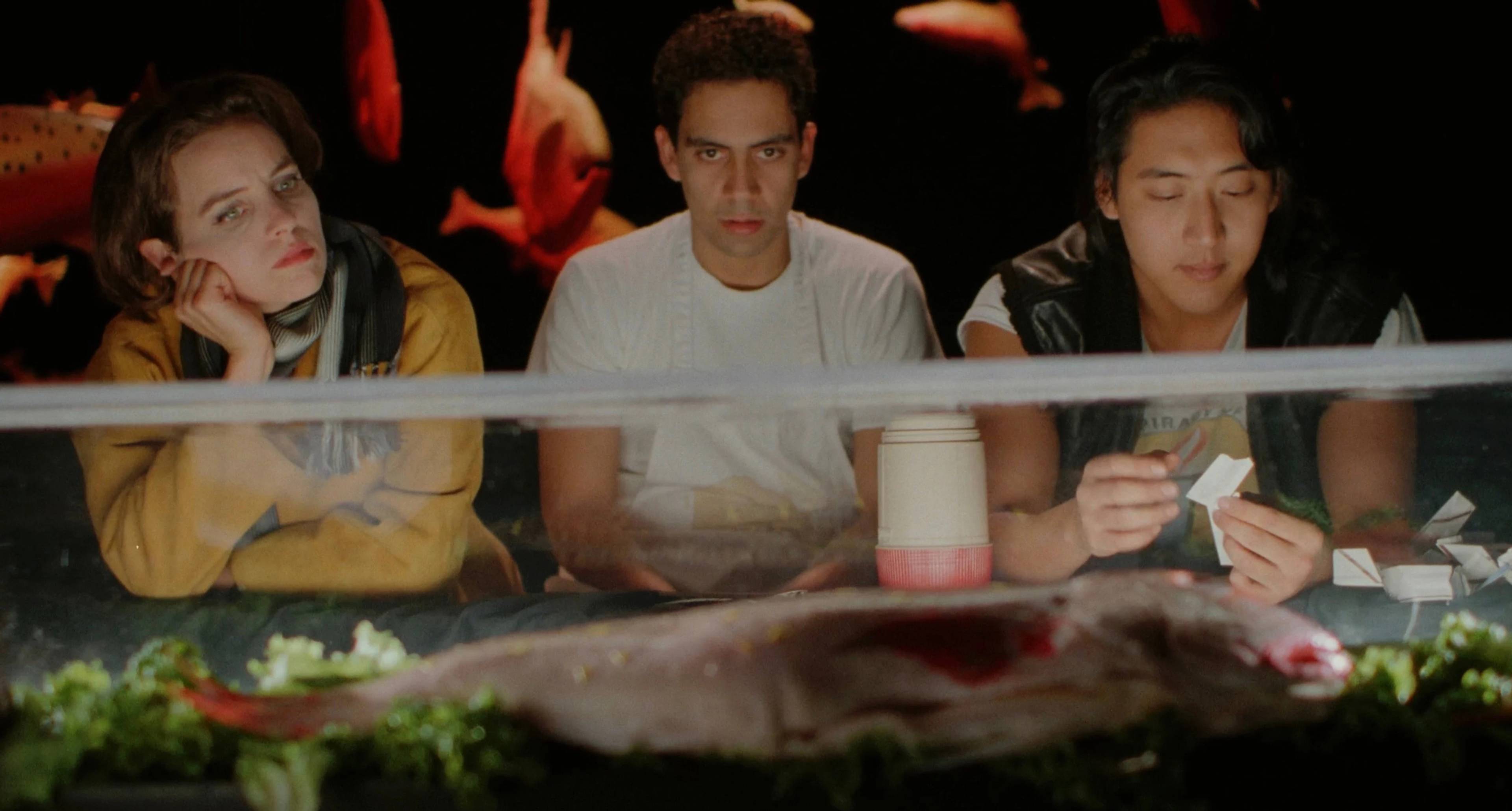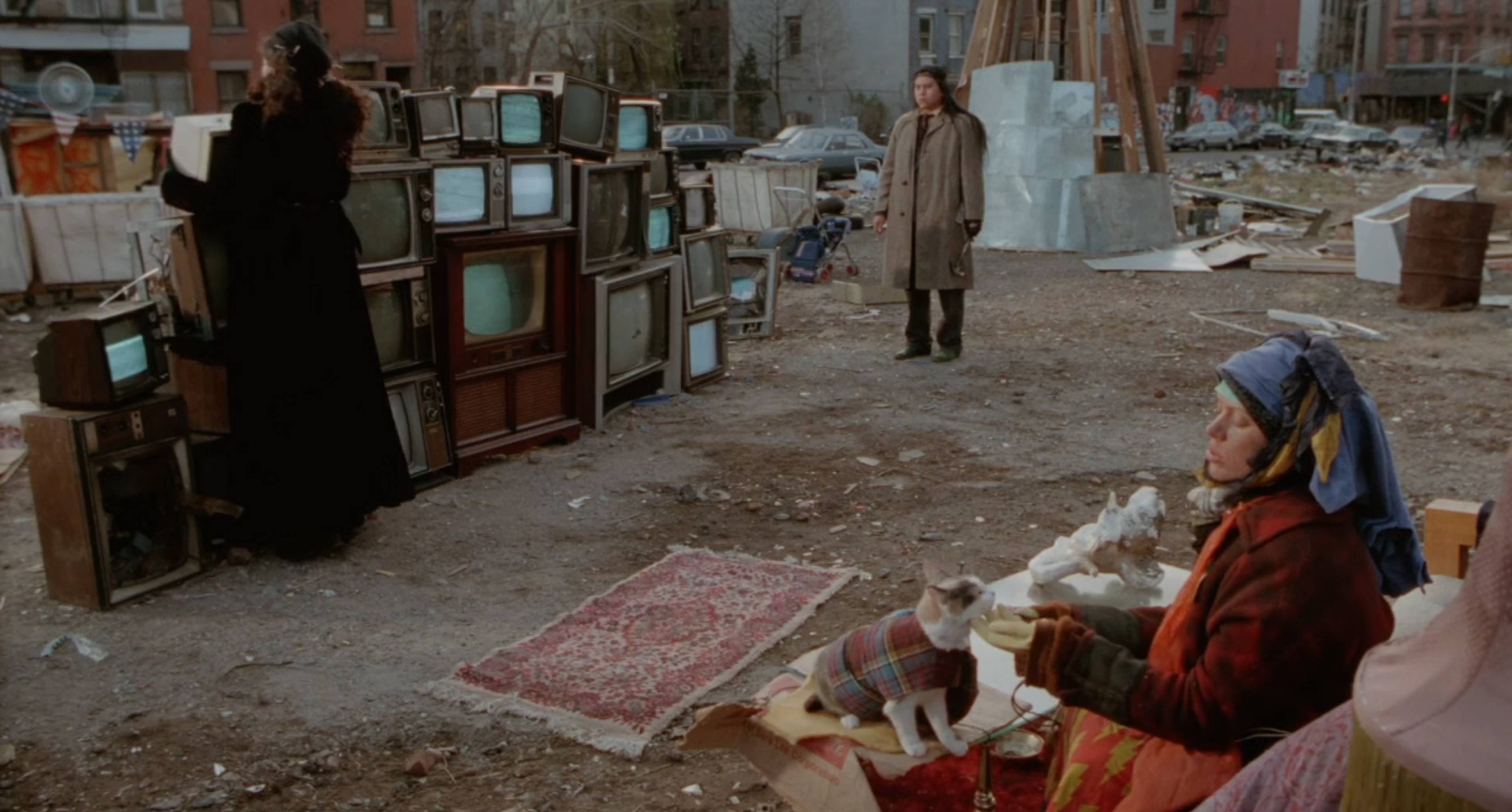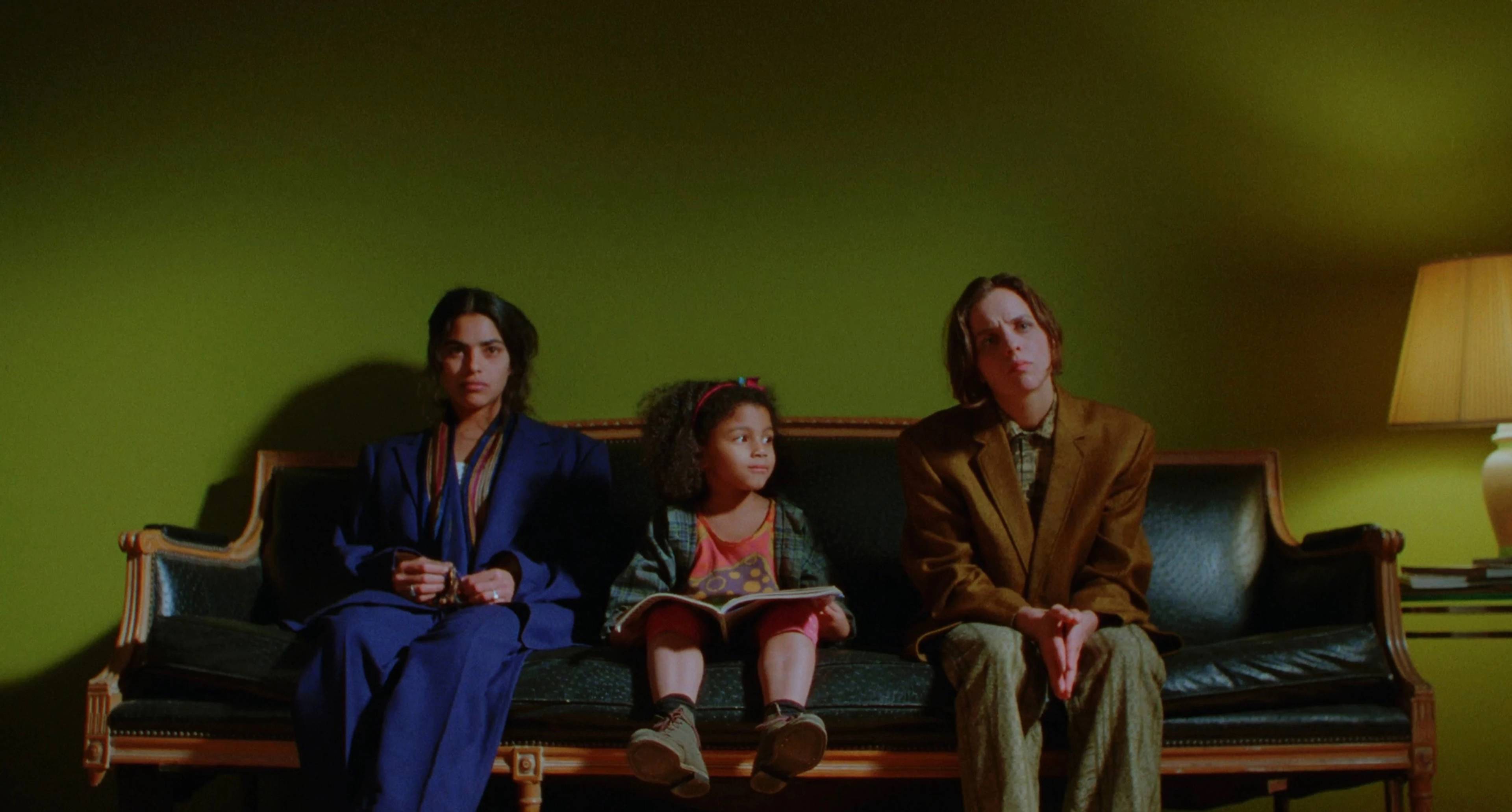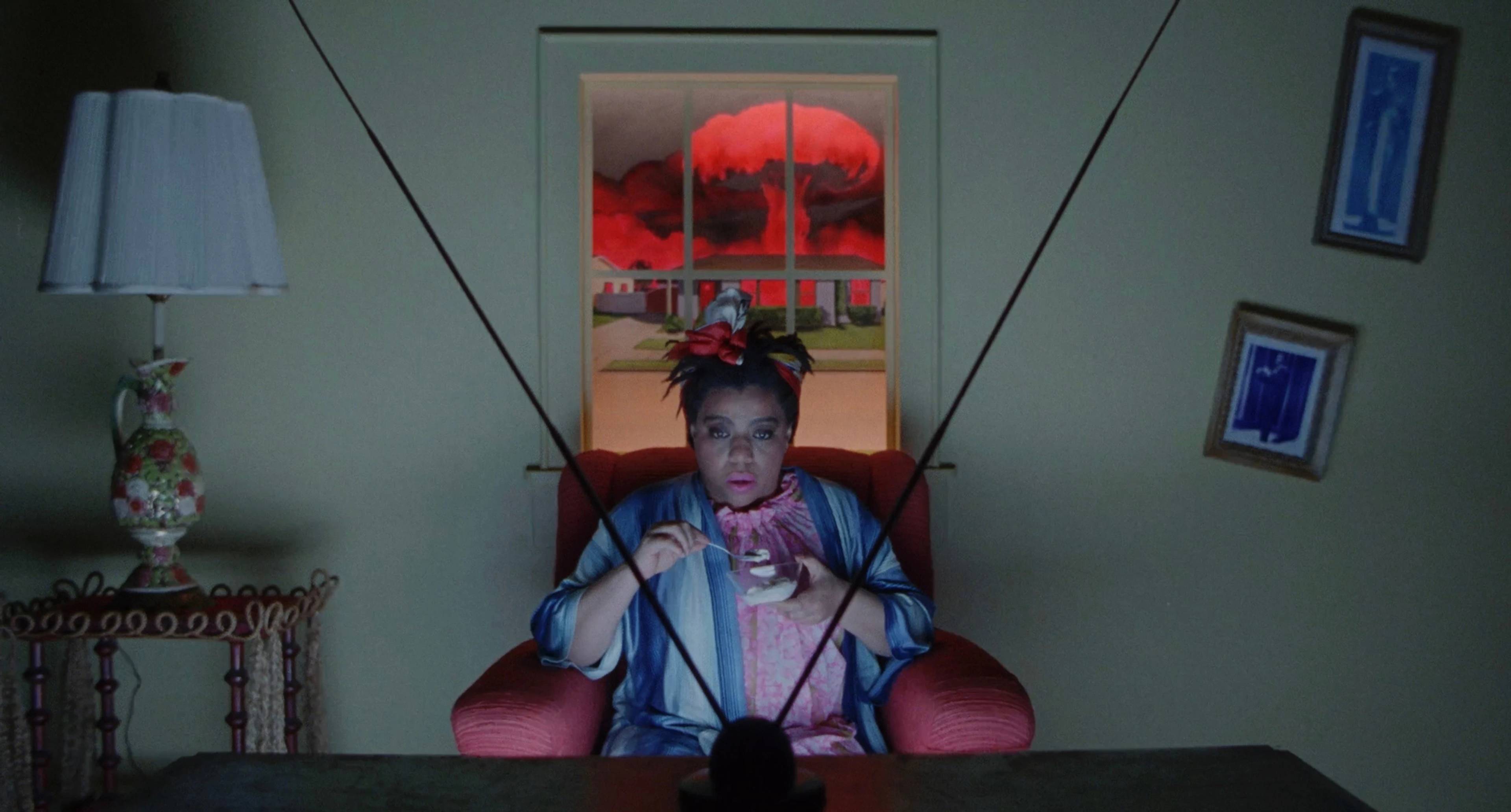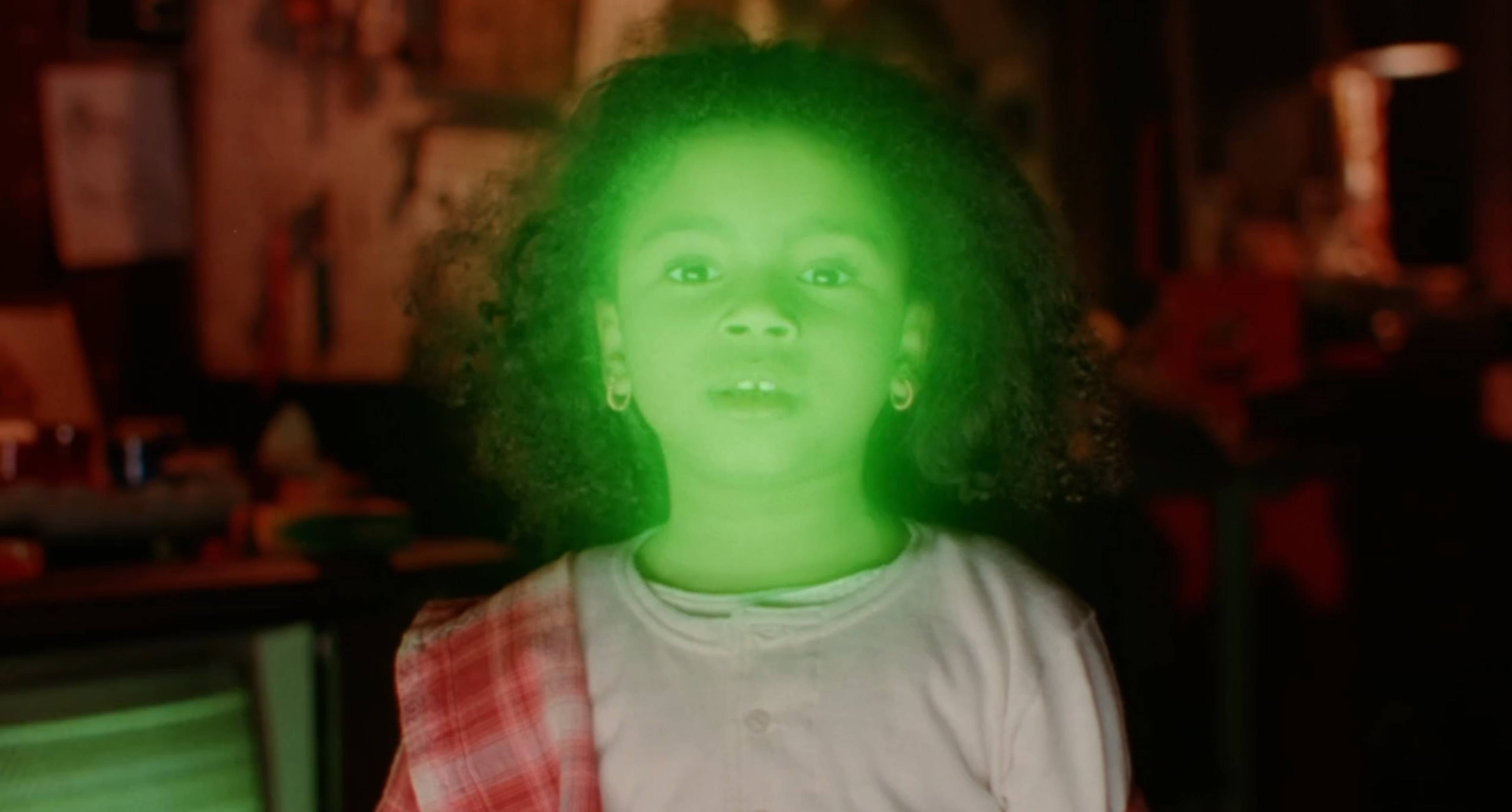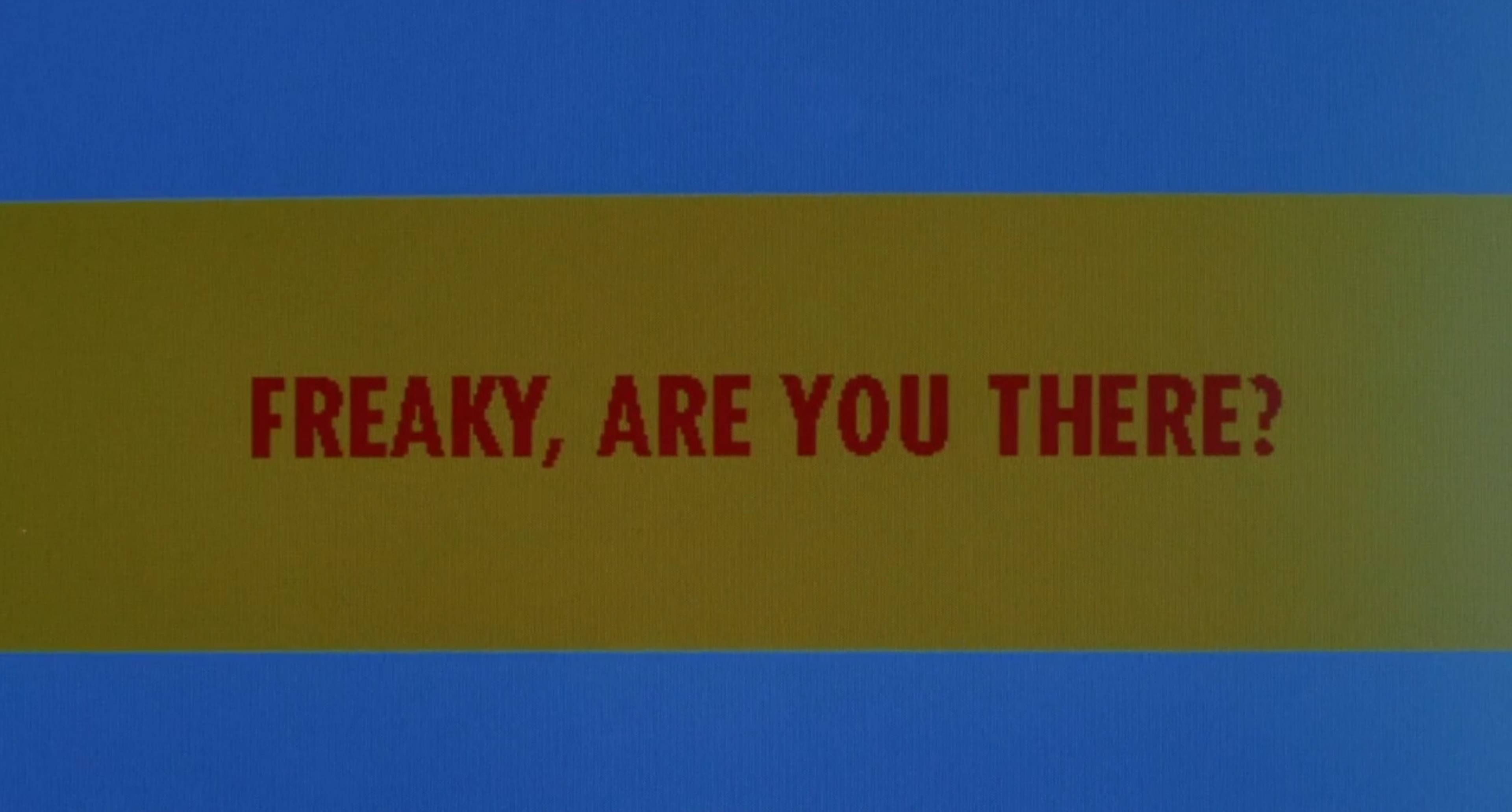Since the 1980s, Taiwanese-American filmmaker and artist Shu Lea Cheang has been submerging patriarchal desire and its commercialized expenditure back into the murky soup of sexuality. Her breakout work, the feature film Fresh Kill (1994), centers a lesbian couple wading through the literal and psychic radioactive trash of a faceless global corporation, abetted by dial-up hacking, flights of poetic fancy, and ACT UP-style interventions. Four years later, she was commissioned to create the Guggenheim Museum’s first net-based artwork, Brandon (1998–99), a sprawling, collaborative, and manifoldly hyperlinked look at the murder of a trans man through the prism of gender and law. Shortly after receiving a $100,000 art and technology prize from the Guggenheim and LG, and ahead of the world premiere of remastered 35mm print of Fresh Kill, Cheang deciphered for Spike why her first film’s themes remain so potent in 2024.
Portrait of Shu Lea Cheang. Photo: @smith, Paris, 2024
Patrick Kurth: You’ve called Fresh Kill a work of “eco-cyber-noia.” Can you describe the film under that rubric?
Shu Lea Cheang: For me, the film sums up my experience living in New York in the 80s. I was seeing how the garbage in Manhattan goes to Staten Island, to the Fresh Kills Landfill, and how in Taiwan, where I grew up, the government was dumping nuclear waste on Orchid Island, which is an offshore island where only aboriginal people live. And if you look at the whole global waste system, the developed countries were dumping toxic waste on the developing countries, mainly in Africa. Initially, I wanted to reverse this one-way circulation. I imagined this toxic fish would come back to America via a sushi restaurant.
Meanwhile, we were writing the script mainly in 1992, and I was surfing the Bulletin Board System (BBS), which was just becoming quite popular. People were using it to chat on different channels, a bit like any social media today. It was pre-internet, but you could feel that this border-crossing network communication was coming. In the film, Jiannbin [Abe Lin] hacks a red dial-up phone, and accidentally gets connected to the African Unity Network. I sensed the possibility of a global alliance, a networked resistance.
PK: There are two clear depictions of the Global South in the film. Orchid Island, which is grainy, tropical, a little sepia, is a dumping ground of nuclear waste. The African Unity Network is presented on TV in blue monotone and, at one point, communicates “STOP THE SHIPMENT.” How did you connect these two representations, one passive and the other agentic?
SLC: First of all, even in Orchid Island, indigenous people also demonstrated against the dumping – they rely on the water there to live! It was the same thing with Fresh Kills, which was so toxic when we were shooting there. Both places are real. In my imagination, the would-be hackers of the African Unity Network created a utopian version of resistance.
The quality difference in the film has to do with the media we used. In Taiwan, we shot in 16mm, whereas the African Unity Network was cut in with video materials. In New York, the main film was shot in 35mm to make a political statement, to say “I want to shoot in Hollywood’s medium” – it has the most density and texture.
All images: Stills from Shu Lea Cheang, Fresh Kill, 1994, 80 min. Courtesy: the artist and Project Native Informant, London
PK: How did you formally bring the media activism of the 80s and 90s, which was responding to the mainstream depiction of HIV/AIDS or lack thereof, into a feature film?
SLC: I was quite involved with the street demonstrations in New York City in the 1980s. I feel like I passed the decade on the street, with a camcorder. It was the first time portable cameras became accessible, and the there were many video collectives founded. I was involved with Paper Tiger TV and Deep Dish TV, and there were also Not Channel Zero, Dyke TV, and ACT UP. We were eager to record our own documents of street movement.
The scene in Fresh Kill when the mother and daughter break into the television station refers to when three activists from ACT UP interrupted a CBS studio broadcast in 1991 yelling “Fight AIDS not Arabs!” There’s also zapping, or channel surfing, at a moment when broadcasting systems were boasting about having 100 channels on cable TV; you think you have all the choice, but you just keep mindlessly changing from one to the next. Along with cable TV, there was also public access TV, which, even if few people know about it in terms of art history or whatever, contributed to so many artists’ uses of the video medium. Even Richard Serra was using video, for a piece called Television Delivers People (1973). I made my own first video documentary, Trial for Tilted Arc (1989), from the public hearings about the takedown of Serra’s sculpture Tilted Arc (1981).
Once, a distribution agent said, “I can’t help you with your film because people just want a gay film or lesbian film, and this mixture of sexuality in your film is just not going anywhere.”
PK: Did you think there would be a natural affinity between new queer cinema and sci-fi?
SLC: “New queer cinema” was coined by B. Ruby Rich in 1992, first in the UK in Sight and Sound, then in the US in the Village Voice. Much later, she collected all these essays into a book, New Queer Cinema: The Director’s Cut (2003), and included her texts on my second feature, I.K.U. (2000), which was conceived as taking off from Blade Runner (1982). Actually, I was trying to engage Samuel Delaney to write the script with me, though in the end, it didn’t work out. So, I went to Tokyo, where science fiction is reality.
My films have always been diversely queer, in terms of race, gender and sexuality. Once, a distribution agent actually got upset with me. She said, “I can’t help you with your film because people just want a gay film or lesbian film, and this mixture of sexuality in your film is just not going anywhere.” I.K.U. is the same: It’s a crossover in terms of sex, not necessarily gay or lesbian. I was known for gender-hacking and genre-bending.
Only last year, when Project Native Informant suggested I could show my four feature films together, including FLUIDØ (2017) and U.K.I. (2023), did I begin seriously thinking I would call them sci-fi new queer cinema. I wasn’t intending to claim it as my genre, but now, I’m quite confident of the grouping, and it confirms that, over thirty years, besides making art, I have made four feature films.
PK: At different points in Fresh Kill, Miguel [Jose Zuniga] reads poems by Federico Garcia Lorca and from Dreamtigers (1960) by Jorge Luis Borges, and three family members – Claire [Erin McMurtry], Mimi [Laurie Carlos], and Honey [Nelini Stam] – share the name Mayakovsky. How did you want to situate poetry in relation to the other language in the film?
SLC: I did appropriate chats on various BBS channels, i.e. business transactions, buying and selling, into the script. Further, we scrambled the words people speak after eating the toxic fish – we mixed the dialogue backward and remixed.
The film script is credited to Jessica Hagedorn, who had just published her novel, Dogeaters (1990). Coming from a Filipino background, it challenged a racist perception of Filipinos. She didn’t create a script from nothing – I provided pretty much the whole structure and some of the dialogues. Most of the literary references came from her. She and I are were both involved with the downtown performance art scene, and we brought in many cameo appearances, i.e. Kate Valk, Ron Vawter of the Wooster group, Laurie Carlos, Robbie Mccauley, Karen Finley, Nicky Paraiso, Jimmy Durham, and Alva Rogers, among others.
PK: How was the response to Fresh Kill when it first came out? And do you hope the restored version will be received any differently?
SLC: Actually, the film was received okay! It premiered at Berlinale in 1994 and went on to quite a lot of film festivals. We had two 35mm prints circulating at that time, one in Europe, one in America. It was also released in the cinema, even if it was not the most popular film. I did get some good reviews, and eventually there were a lot of academic papers written about it. Last year, it was chosen by ARTnews as one of the 100 greatest artworks about New York City, and the Brooklyn Academy of Music showed it in 2022 as part of the “New York 90’s.” So I am in good company.
I just premiered the restored film at International Film Festival of Rotterdam to a really young crowd, and it was really positive. People tell me that they don’t feel it’s gotten old, that it’s still really in line with current issues, which is why I am taking it on a road trip across the US. I’m only looking for cinemas that can still project 35mm, either in museums or independent art houses. I know these old (medium) theaters still have community backing, where community gatherings, like town meeting, can be organized for post-screening dialogue about current issues, such as environmental racism.
PK: Are you going to travel with the film?
SLC: Of course! The 35millimeter print is in five reels. I think some people have this romanticism that I would take it on a road trip by myself, but I will travel with a driver who is also a filmmaker from Calarts, along with another young filmmaker from New Orleans. We are working on getting cinemas signed up for hosting the screenings, mapping out the routes. Perhaps I’m still quite naive, because I haven’t figured out how to rent a car, and I am just realizing that could be really expensive!
___
Shu Lea Cheang’s Fresh Kill will make its world premiere as a remastered 35mm print on Tuesday, 9 April at the Brooklyn Academy of Music.
“Scifi New Queer Cinema, 1994-2023”
Project Native Informant, London
6 Mar – 20 Apr 2024



